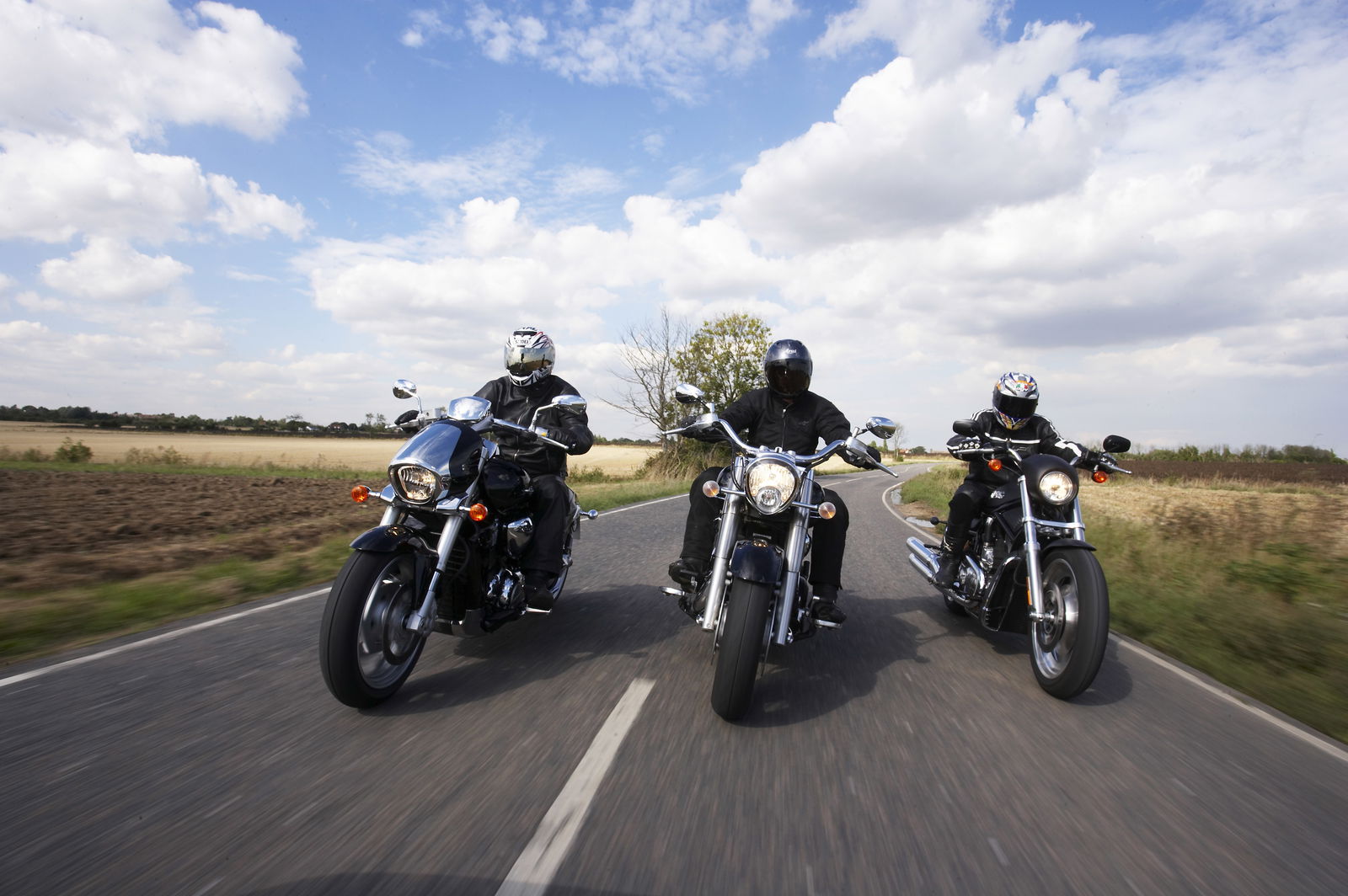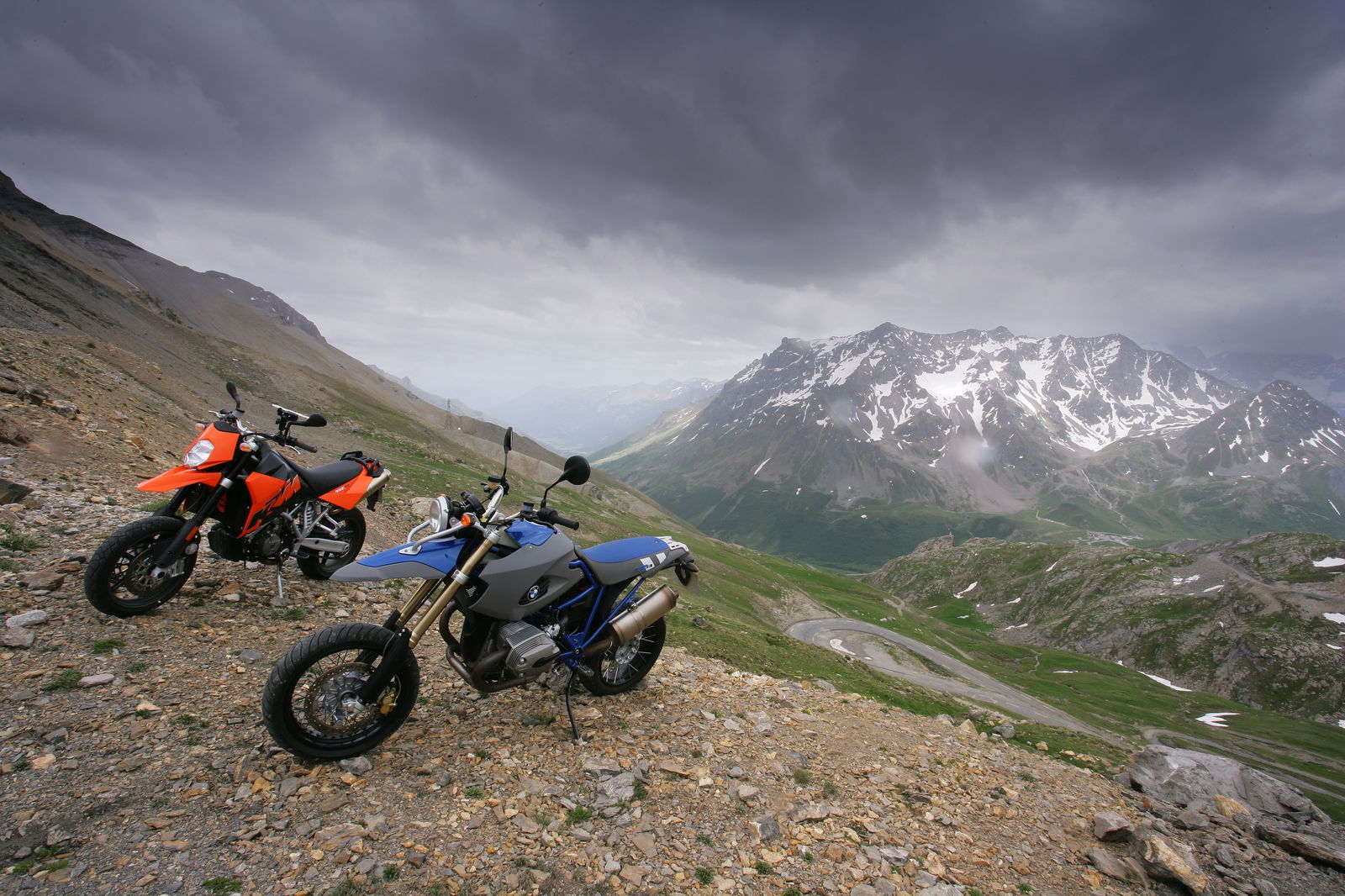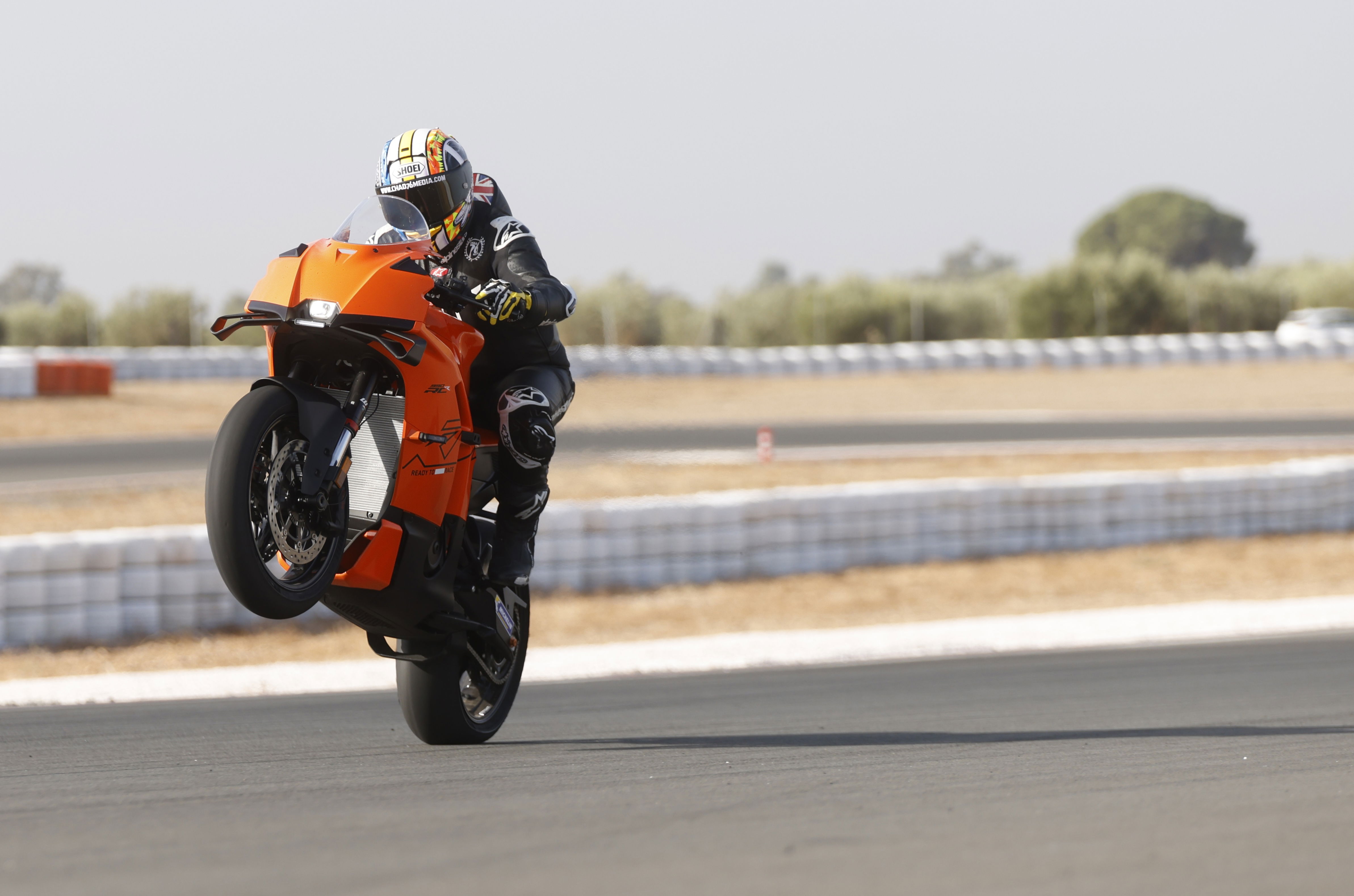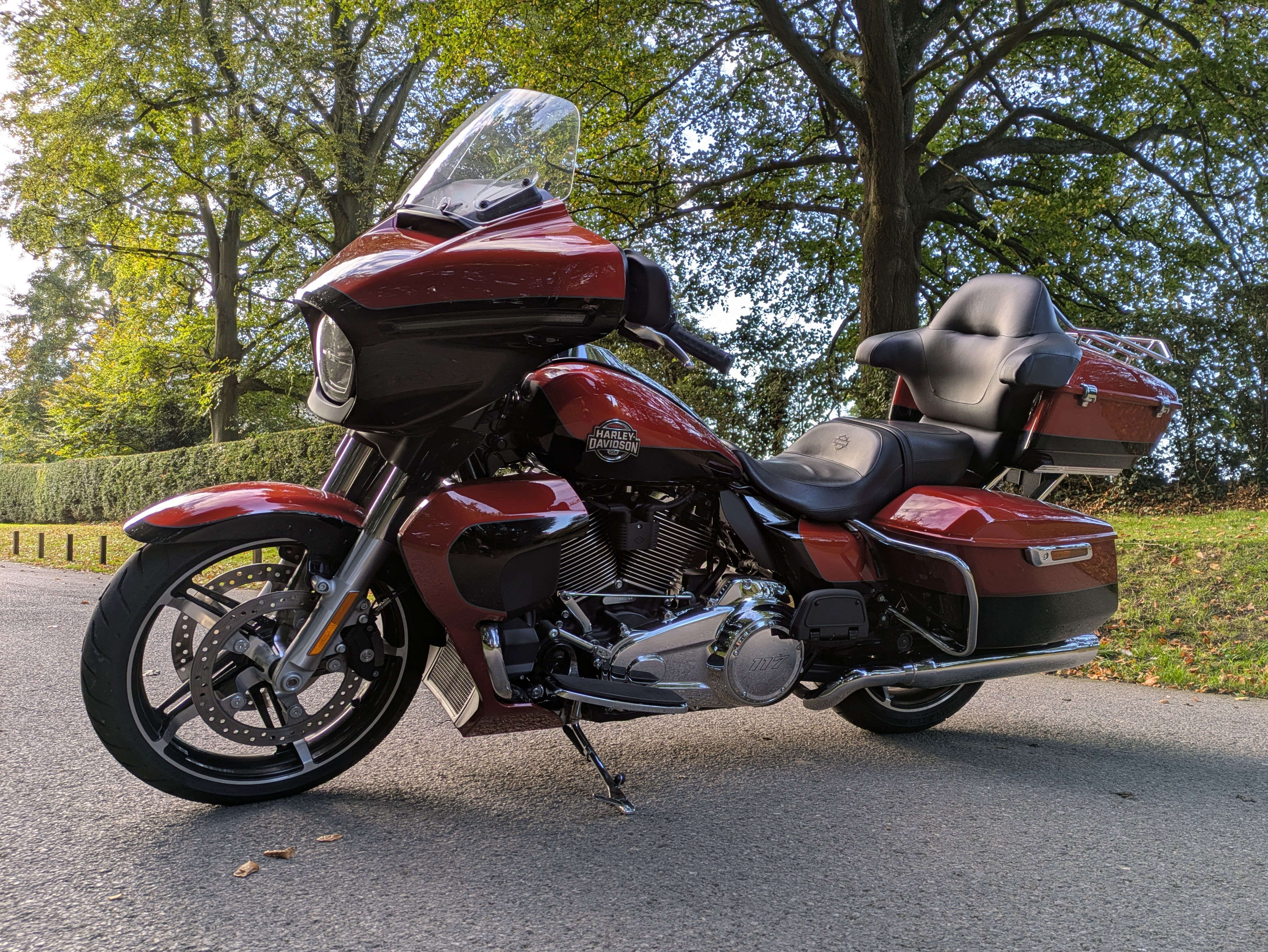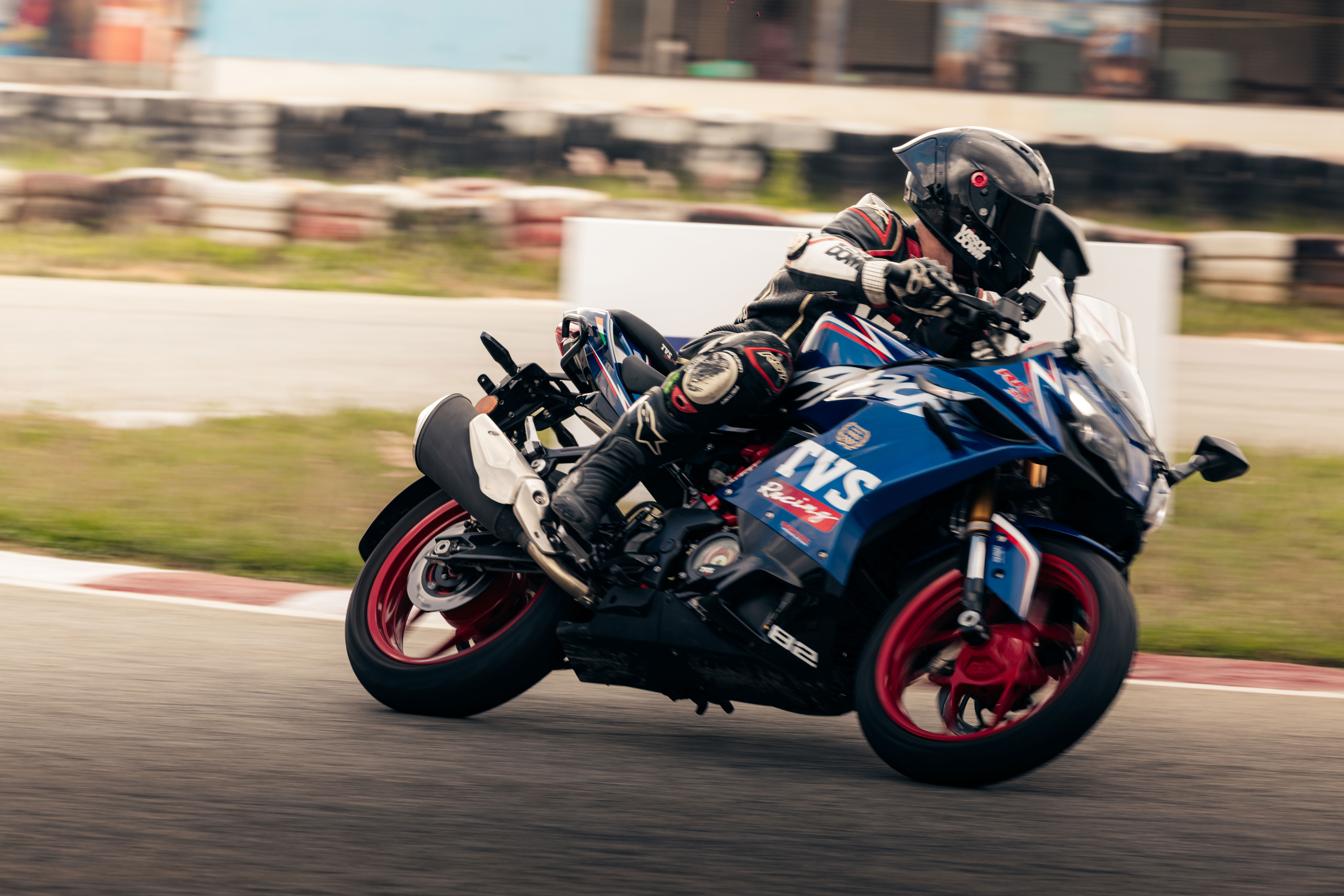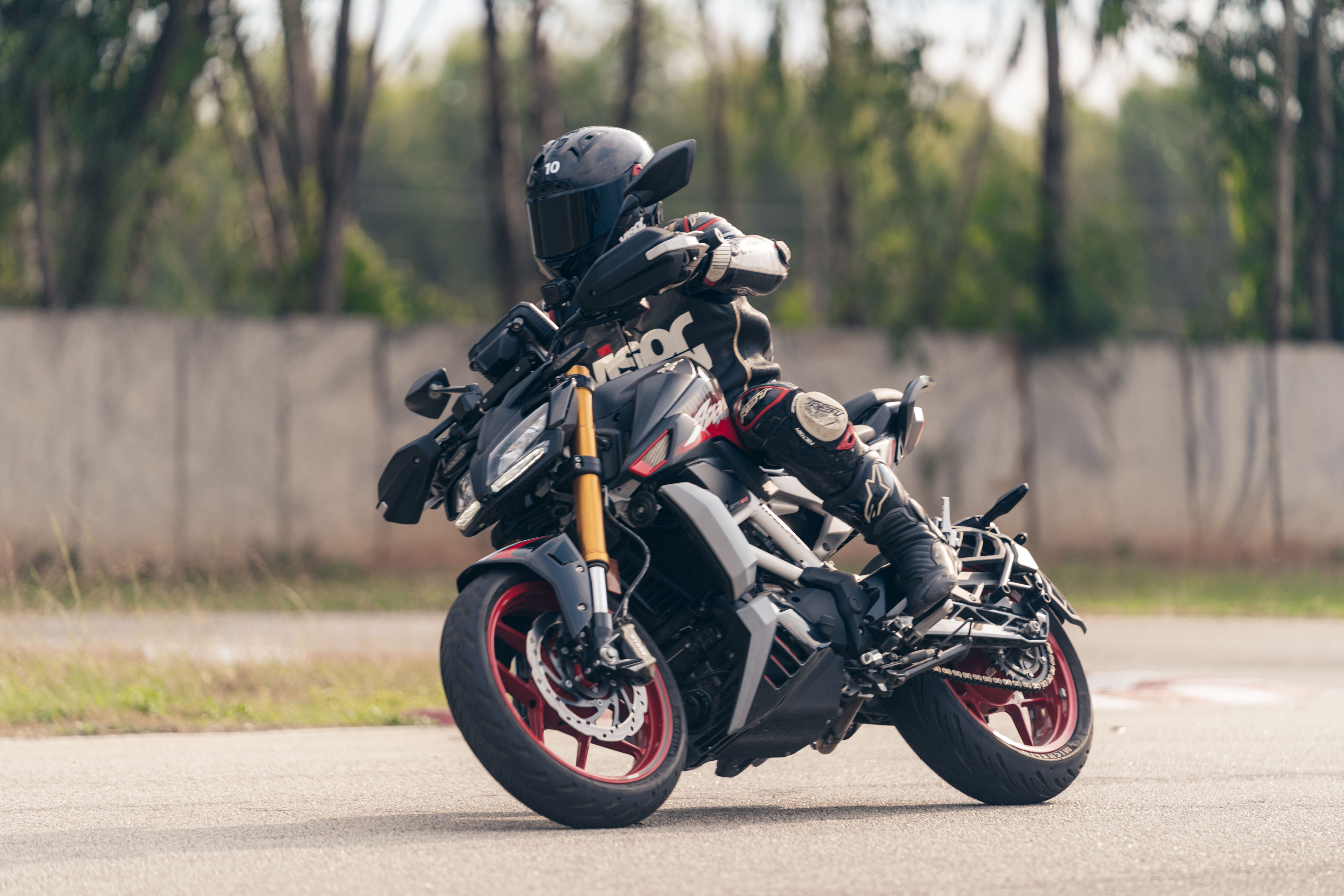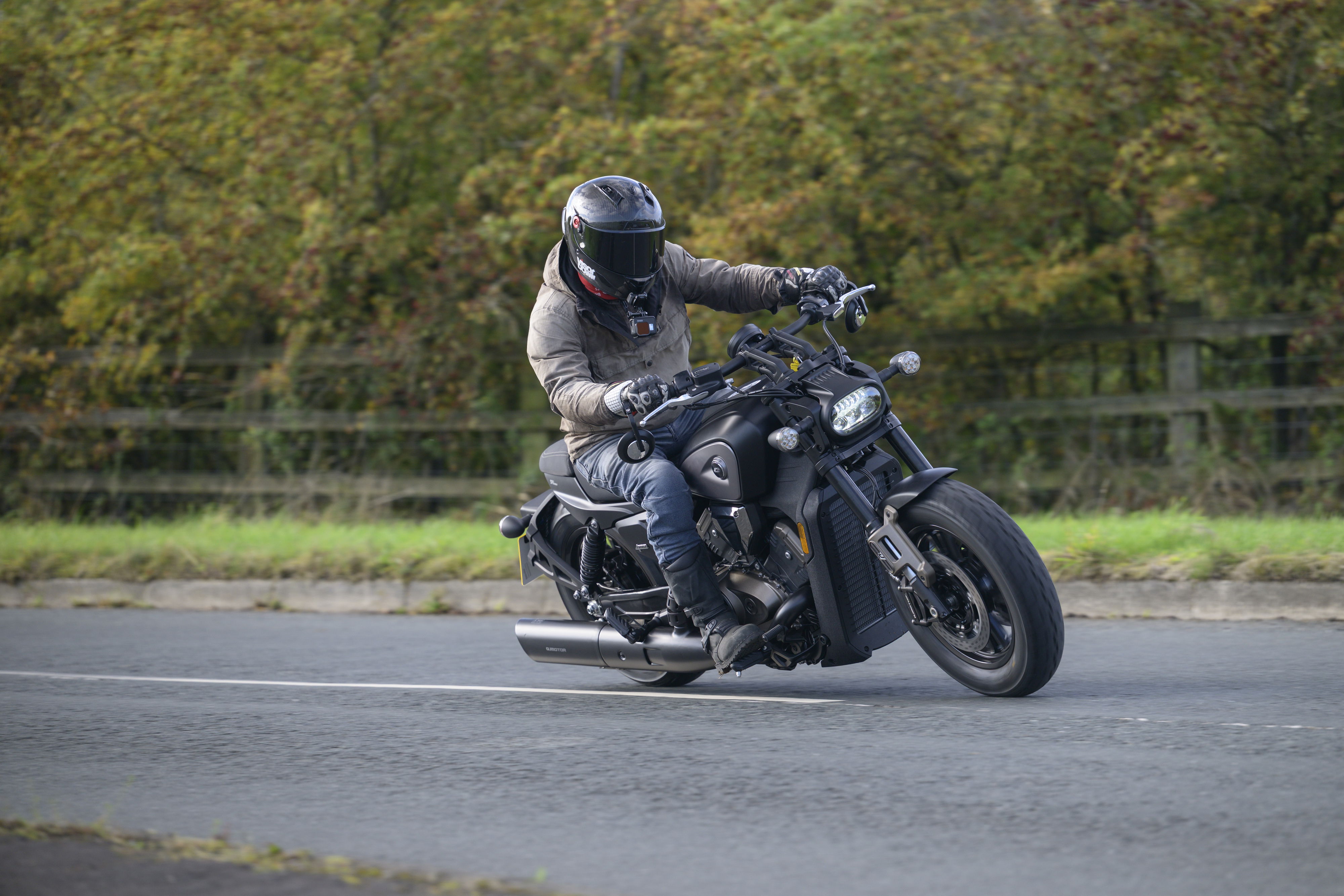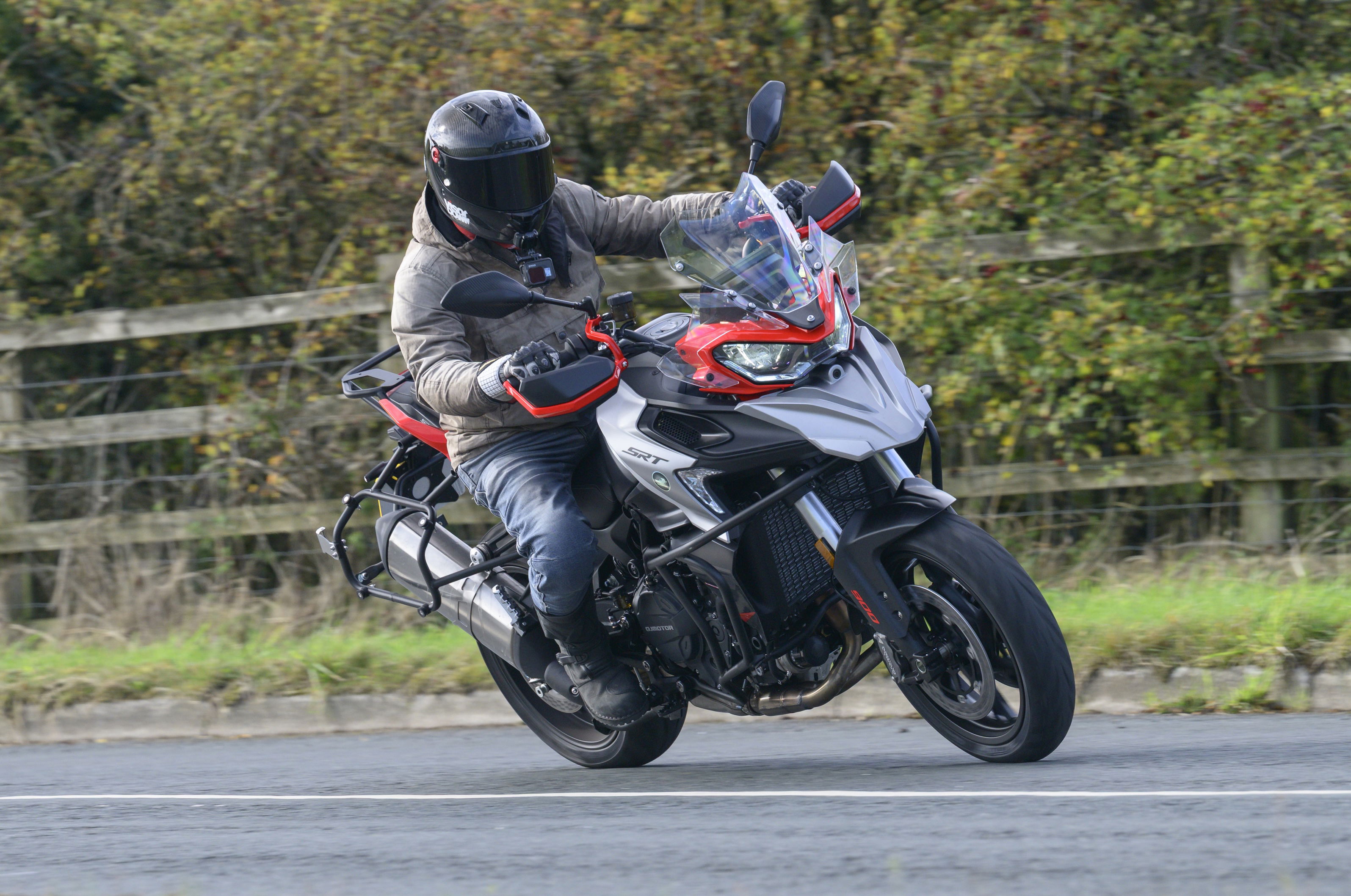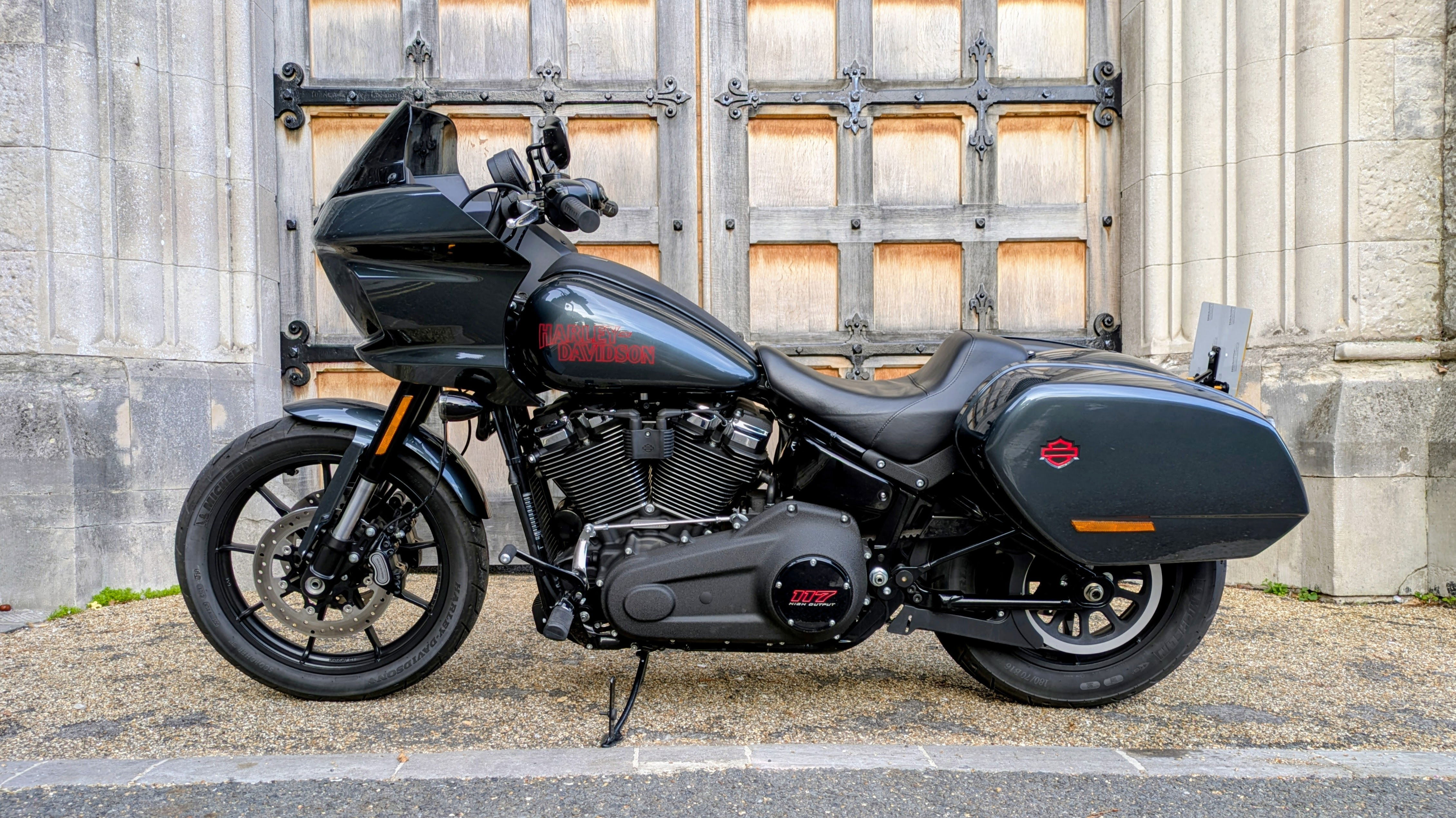Road Test: ST3s v VFR800 v Guzzi Norge v FJR1300AS
In need of something for the weekend, the TWO crew head off to bonny Scotland to debate the subject of sport versus tour. Hi tech, low tech, no tech or V-TEC? Touring tools to cater for all tastes.

 |
"Scotland - We must be mad!" I squeaked. France is nearer and at least has the advantage of a slightly more comprehensible parlance.
Also, they will currently be enjoying an agreeable summer climate while the Scots will be tobogganing to work. "But it'll be great," chimed Whit. "Where else can you go mid-summer and be eaten alive while freezing to death?"
Oh, what the hell. The last time I headed north was to Knockhill to salute the end of Mr Mackenzie's race career, and that was by car. The fun I had blasting down the A77 from Glasgow to Stranraer is still fresh in my mind but the shameful truth is I've never ridden a motorcycle on Scottish soil. So despite a gloomy weather forecast and the absence of tour guide and translator Mackenzie, I was secretly rather enthusiastic to get the show on the road. Armed with lensman Oli T (photography and Harry Potter train trivia) and Army John (trouble-shooting, measured violence and security for public school boy Oli), our weekend warrior team was semi-fit and preparing for action.
The tools for the job include an interesting mix of touring and sport touring bikes, two- and four-cylinder, chain and shaft-drive. The Moto Guzzi Norge makes selection because it's new and looks as though it has potential. Yamaha's FJR1300 is here because of its turbine-like power plant and interesting technical party trick. The smaller yet spicier contestants are in the form of an ageing but recently modified Honda VFR that's entering its third decade of service, and the somewhat over-looked Ducati ST3s. It may seem obvious from the outset which will provide the most comfort or sporting ability, but what about the combination of the two disciplines over varying roads with riders of different ages (John provides the youth vote now Whitham is joining the 40-and-above club) and backgrounds? I reckon we'll cover close to 1500 miles over three days - plenty to weed out any pretenders masquerading as the real thing.
Strolling around the assembled machinery with notepad in hand, I'm intrigued by the unfamiliar Norge 1200.
It looks attractive from all angles, and is nicely finished too. Having not ridden any of the latest models I'll remain slightly sceptical for now, particularly as previous Guzzis have provided the least fulfilling experiences of my entire testing history.
The Yamaha is clearly designed with huge distances in mind and it's no lightweight with the biggest engine, seat and fairing of this bunch. The key point of interest here is not in its ability to cover distances but in the way it changes gear. Curiously, Yamaha have seen fit to develop a semi-automatic shift system that, according to their website, "reduces hassle and fatigue." Operating the manual clutch on a modern Japanese motorcycle has never struck me as an inconvenience, rather more as part of the pleasure of riding, whatever the scenario. I'm sure the boys at Yamaha will have completed enough research to identify a target consumer for such a device, but the four of us are still scratching our heads. Aside from the odd appearance of a big bike without a clutch lever, and the fact that I've yet to fully grasp the point of it, I can't wait to see how it performs.
The venerable Honda still looks sharp in its four-year-old clothing and retains the confident aura that only 20 years of development and huge success can bring. It's back in the limelight after claimed improvements to the two-stage V-TEC valve operation which, in its original guise, was an ever-present irritation. We are now promised a smoother transition as the system steps from two- to four-valve performance, rather than the constant stuttering at just under 7000rpm as it switched backwards and forwards - at the exact revs you find yourself using to tour sportily. It's taken an age for Honda to make the modification so there can be no excuses for getting it wrong.
Our less obvious travelling companion is perhaps the Ducati ST3s. A direct competitor to the Honda in terms of power and price, though presented with a two-cylinder handicap and an extra 200cc of engine. Less obvious, as Ducati's touring offerings have never really impacted on the UK radar due perhaps to our love affair with the VFR and our fascination with the more harder edged, attitudinal offerings from Bologna. The ST3s looks minimalist and purposeful, skinny and nimble. Multi-adjustable …hlins at the rear and 43mm USD Showa forks expose the sporting pedigree, but sophistication will be appreciated more than a racetrack heritage for this weekend caper.
My cunning plan was to start our trip on what appears to be the most sporty and work my way through the pack, arriving at Fort William on the most comfortable. The return journey would be the same, but this time commencing the run by enjoying the famous twisty Scottish Tarmac on the more appropriate machinery, and completing it in the same fashion on one of the rolling sofas.
The Honda was coincidentally the only vacant seat - maybe the others knew something I didn't - so we pointed north and headed towards the M1. It has been a while since I last rode the V4 and I'm instantly reminded of what made this bike such a winner. It immediately feels right and it always feel familiar, even to those who experience it for the first time. The riding position is natural, relaxed and perfectly suited to a sedate cruise or a blast round Brands Hatch. Though not razor sharp, the steering is quick enough and the overall feel is that of a well-balanced and planted machine. A contributory factor will be its weight. At around 250 kilos with a full fuel tank, the VFR won't suffer the occasional twitch and flutter of a pedigree race tool if the going gets a little rough. It is always composed and provides a cosy type of performance that is satisfying, if not electrifying.
Whatever your height a good set of earplugs are necessary, as the windblast will get you. The non-adjustable screen is angled way too low for peaceful motorway cruising, and too low to duck down behind - a bubble screen is the answer, but should be fitted as standard. That aside, most of us could spend a whole day in the saddle without complaint. We were on the M6 before I remembered the V-TEC, which means that Honda's claims of improvement are spot on. The switch to four valves now chimes in smoothly at a slightly lower 6600rpm (and reverts to two valves at an undetectable 6100rpm), though there is still a change in the engine note and a degree more urgency to its acceleration. It seems that the V-TEC system has finally come good, and life at cruising speeds is now interference free.
Hopping on to the ST3s at the first fuel stop provided a couple of surprises. Ducati have fitted a trip computer and adjustable headlights to this ABS model. Very thoughtful. It even has a handle to assist effortless centre stand operation, which is rather fortunate as by way of punishment the sidestand is probably the most useless I have come across since the 851. You'll need to park very carefully as the ST3s has a short stand that means it settles at a dangerous angle, and will topple over with the slightest provocation. The riding position is slightly more relaxed and roomy than the Honda and the overall feel is generally slightly softer. We have a thick, comfortable seat and mirrors that actually work, though not as well as the Honda's. Vibration is acceptable and wind blast slightly less intrusive than the VFR, which makes this a very agreeable place to be sitting. The narrow panniers can only just swallow a full-face helmet but have no negative impact on stability at higher speeds, and have the further advantage of being able to filter through traffic without fear. I feel less inclined to change down in order to overtake, though in terms of outright power it feels quite similar to the VFR. The lower revving V-twin becomes a pleasant burbling companion as the miles clock up and I'm starting to wonder why I haven't nabbed one more often. Despite a regular false neutral between fifth and sixth, the Ducati is already impressing and we haven't yet reached its preferred habitat.
Moto Guzzi have launched the Norge at the ripe old age of 85, and it looks as though they've put a lot of development time into it. My main concern is whether the air-cooled 1151cc V-twin with a claimed 95bhp will be enough to cart around a full-size tourer weighing in at a wet 275 kilos. The first impression is one of a positive and accurate gear change - not the smoothest, but a great improvement over the previous generation, and perfectly acceptable in this company. At cruising speeds with the manually adjustable screen at its highest, the wind still clips the top of my head, though I can just avoid it by stooping. The engine is slightly harsh when revving but manages respectable overtaking without fussy footwork or a heavy right hand. However, a fully laden three-piece set of luggage and passenger will be asking a lot of what is a pleasant but slightly asthmatic engine, which begins to wheeze at around 7000rpm. Power aside, the motor does actually sound rather good, particularly on the overrun as it pops and bangs enthusiastically.
Relaxing and comfortable, the Norge is clearly in the big league when it comes to covering ground. Its funky quadruple polyellptical headlights are ideal for clearing a path through traffic. Less impressive are oddly bar-mounted mirrors that look out of place and become more useless with speed, rendering themselves ineffective by 80mph, or the handlebar that managed to loosen itself virtually clean off the bike. That aside, I watch England become Scotland with absolutely no desire to remove myself from the Norge.
Until that is, the next stop. Army John is loving life aboard the VFR and has already proclaimed he could live with it quite happily until he dies. Whitham is beginning to display strong affections for the Ducati, while Oli looks as though he isn't keen to give up the keys to the FJR again. As we are rapidly approaching Glasgow on the M74, it seems appropriate to dethrone Oli and get some miles in before we hit the city.
The Yamaha is the coach in this class - big, heavy, powerful, silky-smooth and seriously comfortable. But we already knew that. What I wanted to know about was the Yamaha Chip Controlled Shift system. Though completely alien, there is nothing complicated about its semi-automatic operation. Just ride and shift as per normal, but without a clutch. It takes an hour or so to get used to it, and during this time you will take on the appearance of a cretin - particularly if you choose the bar- mounted hand change. Pulling away from the lights is strange without the clutch, but quite fun as you get a consistently tidy and rapid launch. Press a button to activate the handlebar shift and hey presto! Forefinger to change up, thumb to change down. Simple. Except that you will flash the headlight on the up-shift and toot the horn when downshifting, such is the proximity of the relative switchgear. A wrong turn into the scary side of town means free hilarity for the hoards of half-cut Glaswegians, puffing away outside their boozers like gangs of disorderly beagles. "Look at me, I'm motorbiking!" I wave. "Toot-toot!" goes the gear-change.
The system does actually work very well, although the traditional clutch version will shift a fraction faster and ultimately out-pace the YCCS model. Performing slow turns is jerky in first gear, but can be improved by selecting second or third. Downshifting from fifth is particularly smooth and is quite fun when using the hand change.
Prior to my inner city comedy act, I had re-discovered the ace up the Yam's sleeve. Its engine is a winner - despite a heavy throttle action. It's smooth, strong and more than enough to haul over 300 kilos of motorcycle, and Oli's photographic equipment. The useful electric screen is tall enough to provide a silent sweet spot and keeps fatigue at bay. The FJR will out accelerate and out-brake the more nimble Norge, and has a degree of muscle matching serenity that makes it a genuine continent crosser, though it can't match the Guzzi for character.
The A82 out of Glasgow signifies the beginning of the fun stuff. Traffic thins and highland scenery adds a stunning dimension to our travels. Loch Lomond leads to Tyndrum, Glen Coe and the final leg to Fort William, home to the legendary Ben Nevis. The FJR and Norge both have to be set to maximum rear rebound settings as the pace begins to warm, as they would be for any two-up work, though have no trouble keeping up with the friskier Ducati and Honda. We all agree on arrival that none of the bikes disgraced themselves, and none were likely to during the next days exploring the loop around Glenfinnan and Strontian on the A830 and A861.
The trick with Scotland (admittedly based on scant experience) is to come prepared - for bad weather and lots of biting. It was still midge season, which keeps the number of tourists down. We plaster ourselves in midge repellent and manage to dodge threatening pastry chefs and rain-filled clouds. Despite Oli's best efforts to get us killed over unavailable after-hours pudding, Army John performs his peacekeeper routine and keeps us out of trouble. The flip side is being among the most spectacular scenery imaginable with roads to rival anything in mainland Europe.
Our cross-country forays begin to unveil a common thread. The Yamaha could become a little undignified if pushed, but only on the really twisty stuff. The Honda has an addictive gem of a motor, the Guzzi is more flickable than expected and the Ducati was good at everything, despite having a ridiculously short first gear and a rear brake that contributes nothing to the already average retardation process. The ST3s's three-valve motor is happy at any pace and the chassis is happy with anything the motor can throw at it. More torquey than the Honda and just as fast, the big twin will flow or punch out of corners with ease. Despite this, the Honda sounds considerably quicker through the aural illusion of V-TEC. More revs are necessary and the result feels faster than reality. The VFR produces less than 100bhp and even without panniers weighs around 10 kilos more than the ST3s. But in a 70mph roll-on test in fourth, fifth and sixth gears it was impossible to split the two bikes. A dead heat in all three gears.
The softer Norge seems at ease on the more open roads and disguises its weight well. The centre of gravity feels low even with the substantial 23-litre tank fully fuelled, and allows it to cope effortlessly with endless left-to-right flicks, while the beefier FJR requires a little more corner preparation as the entry speed increases. None of us were expecting the shaft-driven tourers to keep up with the sportier chain driven pair as the roads became more narrow and twisty, but it's fair to say that we didn't expect them to be so close behind. Throw in constant undulations, and the more upright riding position combined with extra weight becomes an advantage. The last 20-minute dash into stunning Strontian sees Whit and myself arrive a mere 20 seconds or so ahead of Oli and John aboard the tourers.
The return leg would begin by turning up the wick somewhat, en route to Glen Coe. Starting out on the VFR brought back memories of flying over the mountain section of the Isle of Man TT course aboard an RC45. Fast, open sweepers hugging the hillsides, and the booming ST3s only a couple of lengths ahead. This is the stuff of dreams and better than the Alpine trip I'd made a few weeks ago. The Guzzi is history - John has obviously hit some Bob Marley on his iPod and doesn't fancy pushing too hard. Oli has taken a wrong turn and is heading north. I'm now in love with Scotland and want to swap bikes with Whit. The ST3s shares BT020s with the Honda, though somehow doesn't cope as well when the surface becomes rough. Fortunately there is little rough stuff, so progress remains swift and smooth. Short shifting is more effective on the Duke, while the Honda works best above 8000rpm. Both are far more entertaining than their spec sheets suggest.
After fun time is over, the Norge becomes my sofa for the long leg south. It's not perfect but with an extra 20bhp this'll give any twin cylinder BMW a very serious run for its money. On board computer, a 12V socket and heated grips are nice touches. The seat is low, wide and well padded and it will cover well over 200 miles between fuel stops. The shaft drive is smooth and has no bad habits. This is a very good bike, and the first time I've ever said that about a Moto Guzzi. The big Yamaha is a class act and will pulverise highways at any speed. It's about £3000 more than the Guzzi and £1000 more than the standard shift version. The YCCS does work and good luck if that's your preference, but I can't help but feel it's the answer to a question nobody asked. The Honda is the hardest to fault and will remain more suitable for more riders but the Ducati was the one that pleased most of the riders most of the time. I prefer not to call it the 'winner' as this is not a shoot-out, but am honestly surprised that it ended up being first or second choice for each rider, and a realistic choice for those torn between sport and touring bikes.
The biggest surprise is provided by Scotland, which beats France for motorcycling. Weather permitted.
Whit's words: Four bikes, three winners
The Ducati was a revelation. I didn't think I was going to like it but it was absolutely brilliant. On the motorway it wasn't the best - there was a lot of buffeting and it's quite a stretch to the bars. But everything else - brakes, stability, the motor - were brilliant. The gearbox is typical Ducati and it's easy to miss gears but that's not a problem when you know the problem. Once we got to the fast, flowing roads I really enjoyed it. You can tell what the engine is doing just by feeling it; it's not a vibration, it's just a feeling. It's got character, and plenty of go. Not quite as good as the VFR through the really twisty bits but as a package I really enjoyed it.
The Honda is a true sports tourer, leaning towards the 'sports' bit. The screen's low, there's a sporty feel to the seating position and the engine's fantastic - I love that V4 motor, it begs to be revved.
The suspension is quite harsh but that gives you really good steering, and geometry wise it feels a little bit sharper than the Ducati. I really enjoyed it, but a passenger is going to have a harder time than on any of the other three. It maybe lacks a bit of character because it does everything so well but the build quality is lovely and it sounds brilliant. You can see why they sell loads.
The Yamaha. Hmm... It's a good motorway machine with a really comfy riding position, perfect for covering the miles. And at least then you don't notice that automatic clutch thing. But once you get it off the motorway you have to think so much about it. Change it down for a corner and you're coasting, coasting then BANG! it's in gear, and that's really disconcerting. It's a ball-ache at low speed too. You try and sneak it forward for a three-point turn or something and it's off! You just can't be smooth with it. You're actually better off never using first gear, only second or even third to keep it as smooth as possible. I really can't understand what Yamaha are trying to prove with the automatic clutch.
It's not that horrible through the turns to be honest, and the brakes are fantastic, the best of the bunch. That big, gutsy engine is smoothest of the lot too - you just stick it in a high gear and leave it there, which is good because that clutch thing is 'orrible. The most motorway friendly bike here, but it doesn't do anything for me in an exciting, motorbike-riding way.
The Guzzi is a bit of an oddball. It's another motorway muncher and you could get real comfy on it. The screen is hard to tweak when you're on the move because you've got to use both hands but we got it so you could read a paper behind it if you wanted. The gearbox is clunky but not as bad as I was expecting and the engine is good with loads of character. Once you're off the motorway it's a big, squashy lump really. Everything works, the brakes work, it steers okay, but you have to think ahead with it. I didn't dislike it at all, I thought it was a good bike, but it's not aimed at the same kind of people as the Ducati and Honda.
SPECS - DUCATI
TYPE - ALL ROUNDER
PRODUCTION DATE - 2007
PRICE NEW - £8495
ENGINE CAPACITY - 992cc
POWER - 106.4bhp@8639rpm
TORQUE - 70.1lb.ft@7100rpm
WEIGHT - 204kg
SEAT HEIGHT - 820mm
FUEL CAPACITY - 21L
TOP SPEED - 138.1mph
0-60 - n/a
TANK RANGE - 195miles
SPECS - HONDA
TYPE - ALL ROUNDER
PRODUCTION DATE - 2007
PRICE NEW - £8499
ENGINE CAPACITY - 782cc
POWER - 107.3bhp@10,509rpm
TORQUE - 59.3lb.ft@8000rpm
WEIGHT - 218kg
SEAT HEIGHT - 805mm
FUEL CAPACITY - 22L
TOP SPEED - 144mph
0-60 - n/a
TANK RANGE - 165miles
SPECS - MOTO GUZZI
TYPE - ALL ROUNDER
PRODUCTION DATE - 2007
PRICE NEW - £8600
ENGINE CAPACITY - 1151cc
POWER - 83.3bhp@8600rpm
TORQUE - 67.2lb.ft@5600rpm
WEIGHT - 246kg
SEAT HEIGHT - 800mm
FUEL CAPACITY - 23L
TOP SPEED - 120.7mph
0-60 - n/a
TANK RANGE - 225miles
SPECS - YAMAHA
TYPE - ALL ROUNDER
PRODUCTION DATE - 2007
PRICE NEW - £11,799
ENGINE CAPACITY - 1295cc
POWER - 143bhp@8000rpm
TORQUE - 99lb.ft@7000rpm
WEIGHT - 268kg
SEAT HEIGHT - 800mm
FUEL CAPACITY - 25L
TOP SPEED - 148.5mph
0-60 - n/a
TANK RANGE - 210miles

"SCOTLAND? WE MUST be mad!" I squeaked. France is nearer and at least has the advantage of a slightly more comprehensible parlance.
Also, they will currently be enjoying an agreeable summer climate while the Scots will be tobogganing to work. "But it'll be great," chimed Whit. "Where else can you go mid-summer and be eaten alive while freezing to death?"
Oh, what the hell. The last time I headed north was to Knockhill to salute the end of Mr Mackenzie's race career, and that was by car. The fun I had blasting down the A77 from Glasgow to Stranraer is still fresh in my mind but the shameful truth is I've never ridden a motorcycle on Scottish soil. So despite a gloomy weather forecast and the absence of tour guide and translator Mackenzie, I was secretly rather enthusiastic to get the show on the road. Armed with lensman Oli T (photography and Harry Potter train trivia) and Army John (trouble-shooting, measured violence and security for public school boy Oli), our weekend warrior team was semi-fit and preparing for action.
The tools for the job include an interesting mix of touring and sport touring bikes, two- and four-cylinder, chain and shaft-drive. The Moto Guzzi Norge makes selection because it's new and looks as though it has potential. Yamaha's FJR1300 is here because of its turbine-like power plant and interesting technical party trick. The smaller yet spicier contestants are in the form of an ageing but recently modified Honda VFR that's entering its third decade of service, and the somewhat over-looked Ducati ST3s. It may seem obvious from the outset which will provide the most comfort or sporting ability, but what about the combination of the two disciplines over varying roads with riders of different ages (John provides the youth vote now Whitham is joining the 40-and-above club) and backgrounds? I reckon we'll cover close to 1500 miles over three days - plenty to weed out any pretenders masquerading as the real thing.
Strolling around the assembled machinery with notepad in hand, I'm intrigued by the unfamiliar Norge 1200.
It looks attractive from all angles, and is nicely finished too. Having not ridden any of the latest models I'll remain slightly sceptical for now, particularly as previous Guzzis have provided the least fulfilling experiences of my entire testing history.
The Yamaha is clearly designed with huge distances in mind and it's no lightweight with the biggest engine, seat and fairing of this bunch. The key point of interest here is not in its ability to cover distances but in the way it changes gear. Curiously, Yamaha have seen fit to develop a semi-automatic shift system that, according to their website, "reduces hassle and fatigue." Operating the
manual clutch on a modern Japanese motorcycle has never struck me as an inconvenience, rather more as part of the pleasure of riding, whatever the scenario. I'm sure the boys at Yamaha will have completed enough research to identify a target consumer for such a device, but the four of us are still scratching our heads. Aside from the odd appearance of a big bike without a clutch lever, and the fact that I've yet to fully grasp the point of it, I can't wait to see how it performs.
The venerable Honda still looks sharp in its four-year-old clothing and retains the confident aura that only 20 years of development and huge success can bring. It's back in the limelight after claimed improvements to the two-stage V-TEC valve operation which, in its original guise, was an ever-present irritation. We are now promised a smoother transition as the system steps from two- to four-valve performance, rather than the constant stuttering at just under 7000rpm as it switched backwards and forwards - at the exact revs you find yourself using to tour sportily. It's taken an age for Honda to make the modification so there can be no excuses for getting it wrong.
Our less obvious travelling companion is perhaps the Ducati ST3s. A direct competitor to the Honda in terms of power and price, though presented with a two-cylinder handicap and an extra 200cc of engine. Less obvious, as Ducati's touring offerings have never really impacted on the UK radar due perhaps to our love affair with the VFR and our fascination with the more harder edged, attitudinal offerings from Bologna. The ST3s looks minimalist and purposeful, skinny and nimble. Multi-adjustable …hlins at the rear and 43mm USD Showa forks expose the sporting pedigree, but sophistication will be appreciated more than a racetrack heritage for this weekend caper.
My cunning plan was to start our trip on what appears to be the most sporty and work my way through the pack, arriving at Fort William on the most comfortable. The return journey would be the same, but this time commencing the run by enjoying the famous twisty Scottish Tarmac on the more appropriate
machinery, and completing it in the same fashion on one of the rolling sofas.
The Honda was coincidentally the only vacant seat - maybe the others knew something I didn't - so we pointed north and headed towards the M1. It has been a while since I last rode the V4 and I'm instantly reminded of what made this bike such a winner. It immediately feels right and it always feel familiar, even to those who experience it for the first time. The riding position is natural, relaxed and perfectly suited to a sedate cruise or a blast round Brands Hatch. Though not razor sharp, the steering is quick enough and the overall feel is that of a well-balanced and planted machine. A contributory factor will be its weight. At around 250 kilos with a full fuel tank, the VFR won't suffer the occasional twitch and flutter of a pedigree race tool if the going gets a little rough. It is always composed and provides a cosy type of performance that is satisfying, if not electrifying.
Whatever your height a good set of earplugs are necessary, as the windblast will get you. The non-adjustable screen is angled way too low for peaceful motorway cruising, and too low to duck down behind - a bubble screen is the answer, but should be fitted as standard. That aside, most of us could spend a whole day in the saddle without complaint. We were on the M6 before I remembered the V-TEC, which means that Honda's claims of improvement are spot on. The switch to four valves now chimes in smoothly at a slightly lower 6600rpm (and reverts to two valves at an undetectable 6100rpm), though there is still a change in the engine note and a degree more urgency to its acceleration. It seems that the V-TEC system has finally come good, and life at cruising speeds is now interference free.
Hopping on to the ST3s at the first fuel stop provided a couple of surprises. Ducati have fitted a trip computer and adjustable headlights to this ABS model. Very thoughtful. It even has a handle to assist effortless centre stand operation, which is rather fortunate as by way of punishment the sidestand is probably the most useless I have come across since the 851.
You'll need to park very carefully as the ST3s has a short stand that means it settles at a dangerous angle, and will topple over with the slightest provocation. The riding position is slightly more relaxed and roomy than the Honda and the overall feel is generally slightly softer. We have a thick, comfortable seat and mirrors that actually work, though not as well as the Honda's. Vibration is acceptable and wind blast slightly less intrusive than the VFR, which makes this a very agreeable place to be sitting. The narrow panniers can only just swallow a full-face helmet but have no negative impact on stability at higher speeds, and have the further advantage of being able to filter through traffic without fear. I feel less inclined to change down in order to overtake, though in terms of outright power it feels quite similar to the VFR. The lower revving V-twin becomes a pleasant burbling companion as the miles clock up and I'm starting to wonder why I haven't nabbed one more often. Despite a regular false neutral between fifth and sixth, the Ducati is already impressing and we haven't yet reached its preferred habitat.
Moto Guzzi have launched the Norge at the ripe old age of 85, and it looks as though they've put a lot of development time into it. My main concern is whether the air-cooled 1151cc V-twin with a claimed 95bhp will be enough to cart around a full-size tourer weighing in at a wet 275 kilos. The first impression is one of a positive and accurate gear change - not the smoothest, but a great improvement over the previous generation, and perfectly acceptable in this company. At cruising speeds with the manually adjustable screen at its highest, the wind still clips the top of my head, though I can just avoid it by stooping. The engine is slightly harsh when revving but manages respectable overtaking without fussy footwork or a heavy right hand. However, a fully laden three-piece set of luggage and passenger will be asking a lot of what is a pleasant but slightly asthmatic engine, which begins to wheeze at around 7000rpm. Power aside, the motor does actually sound rather good, particularly on the overrun as it pops and bangs enthusiastically.
Relaxing and comfortable, the Norge is clearly in the big league when it comes to covering ground. Its funky quadruple polyellptical headlights are ideal for clearing a path through traffic. Less impressive are oddly bar-mounted mirrors that look out of place and become more useless with speed, rendering themselves ineffective by 80mph, or the handlebar that managed to loosen itself virtually clean off the bike. That aside, I watch England become Scotland with absolutely no desire to remove myself from the Norge.
